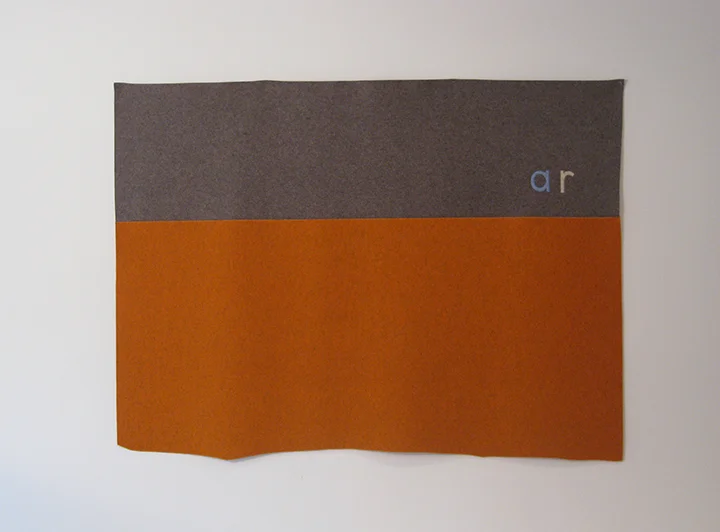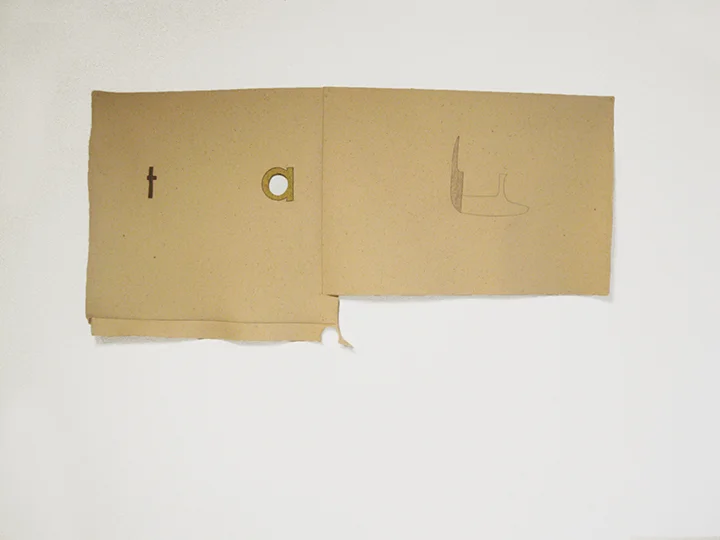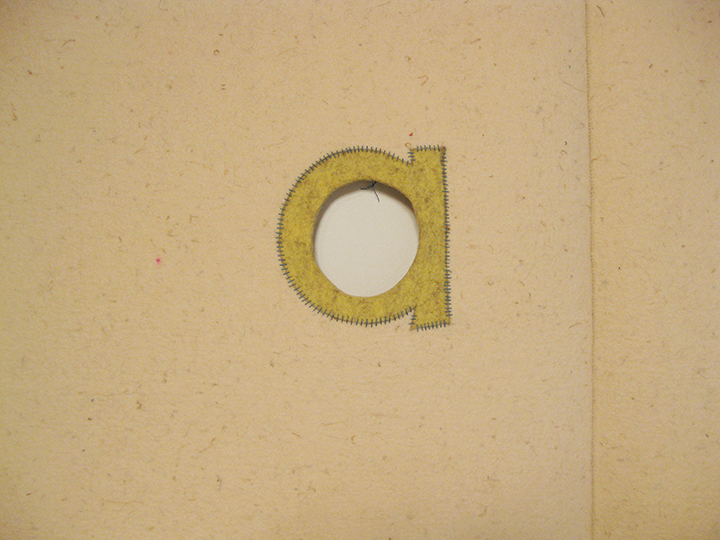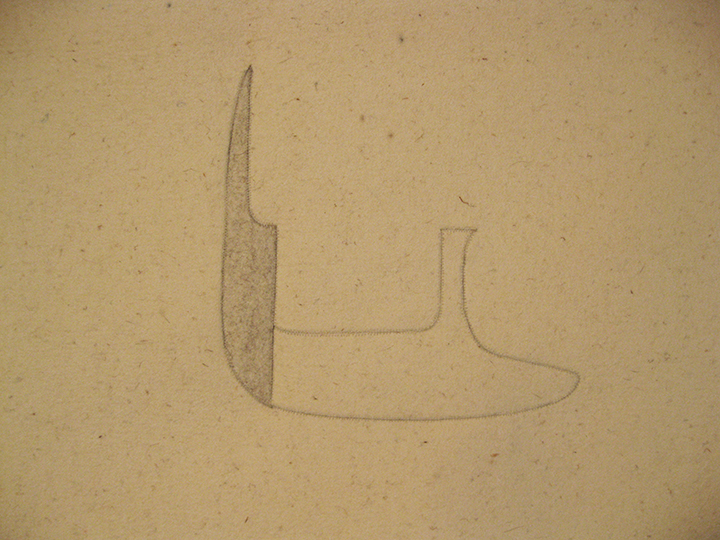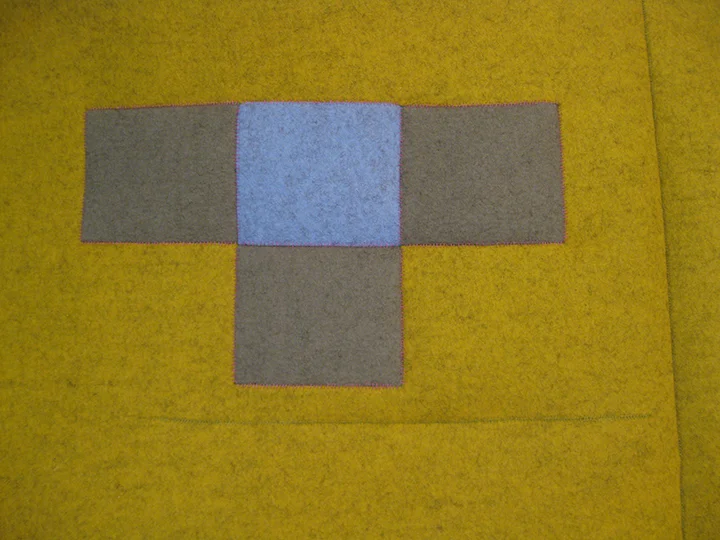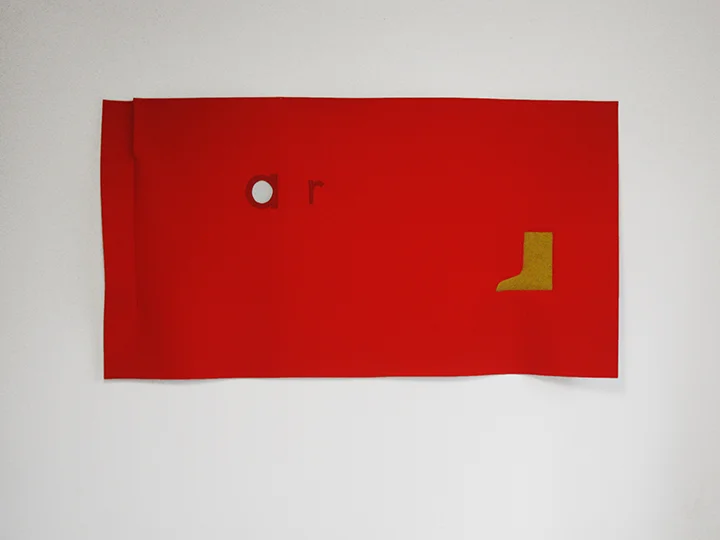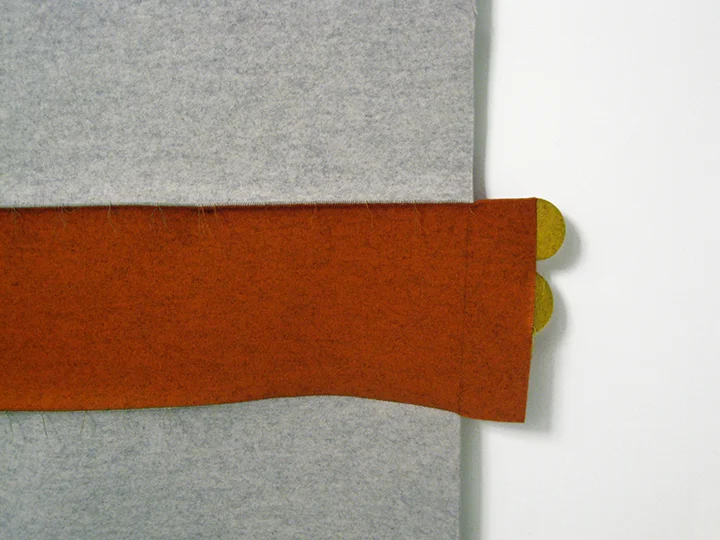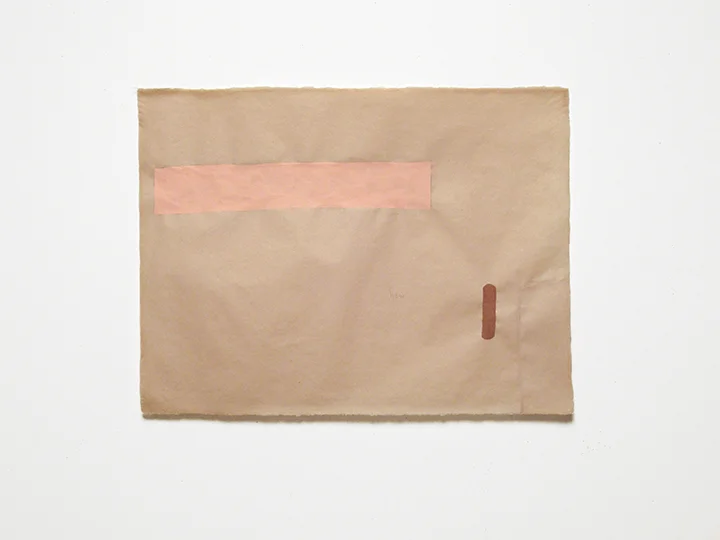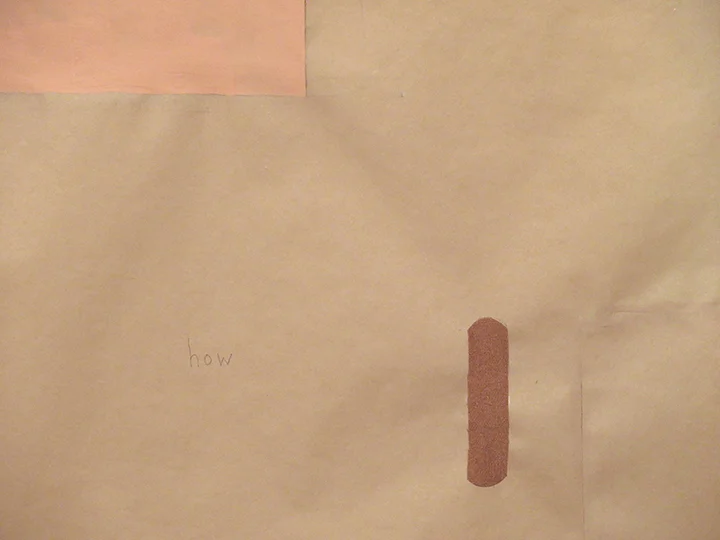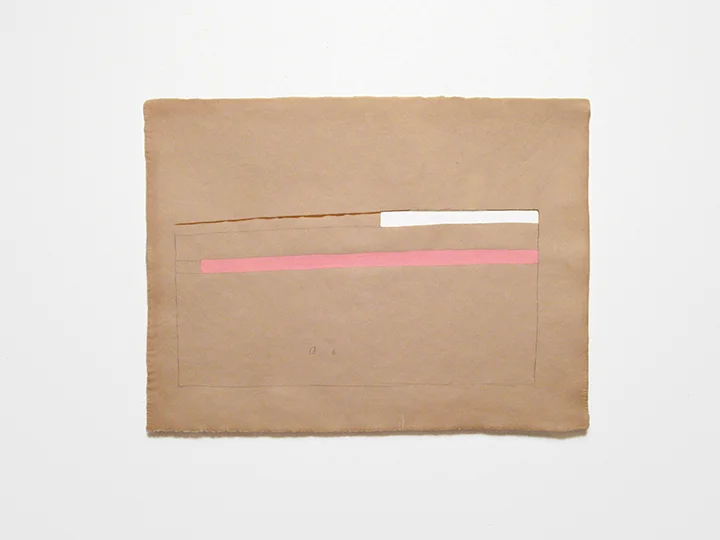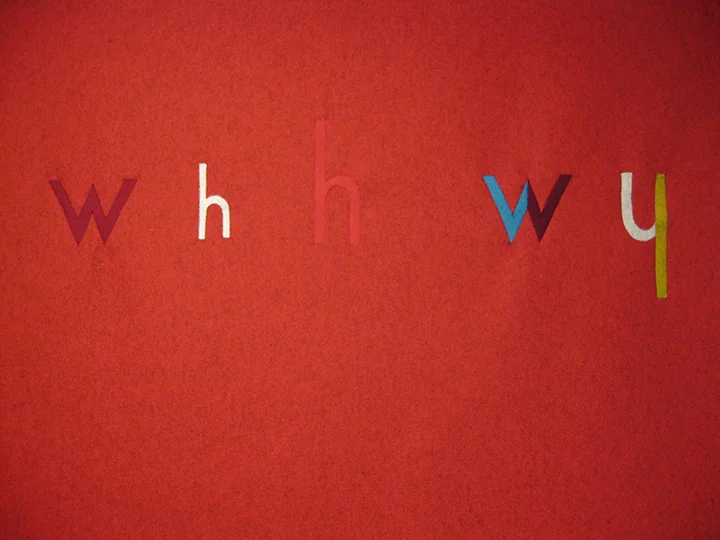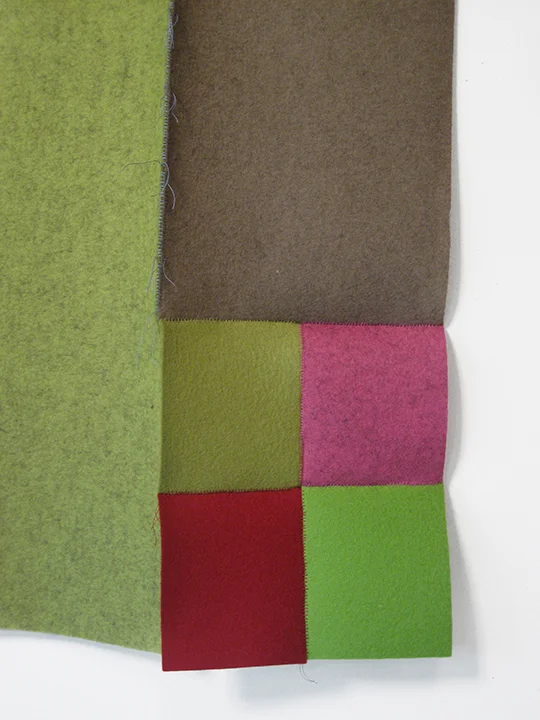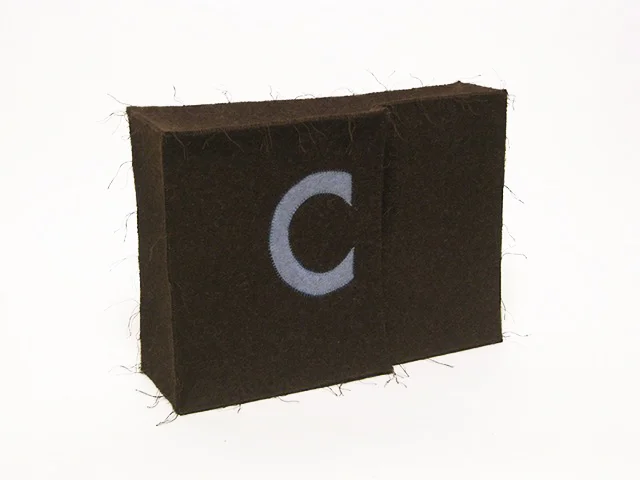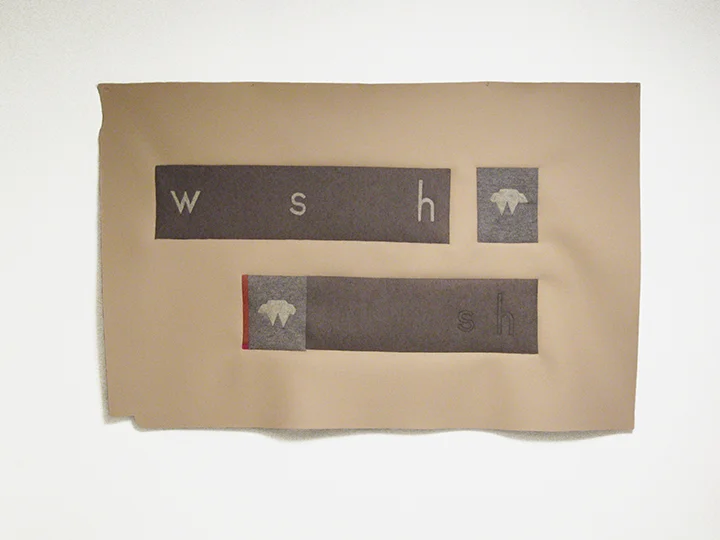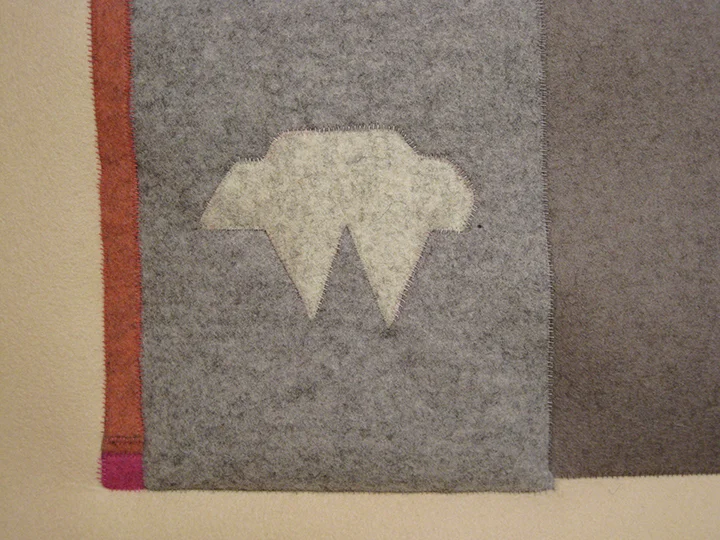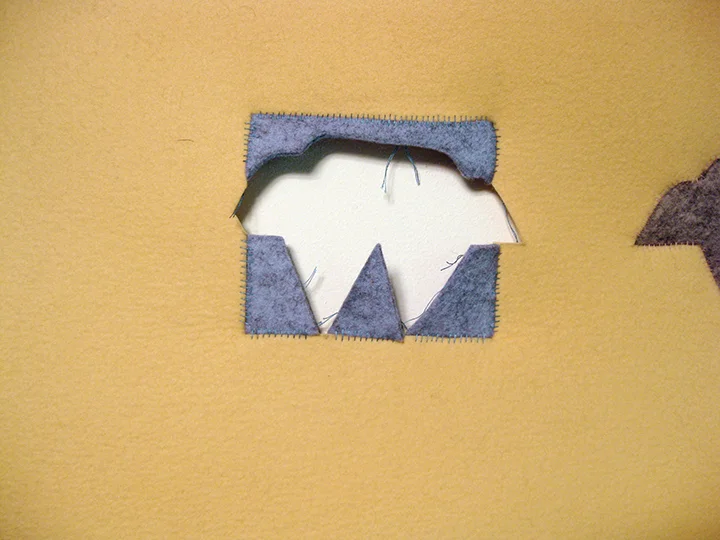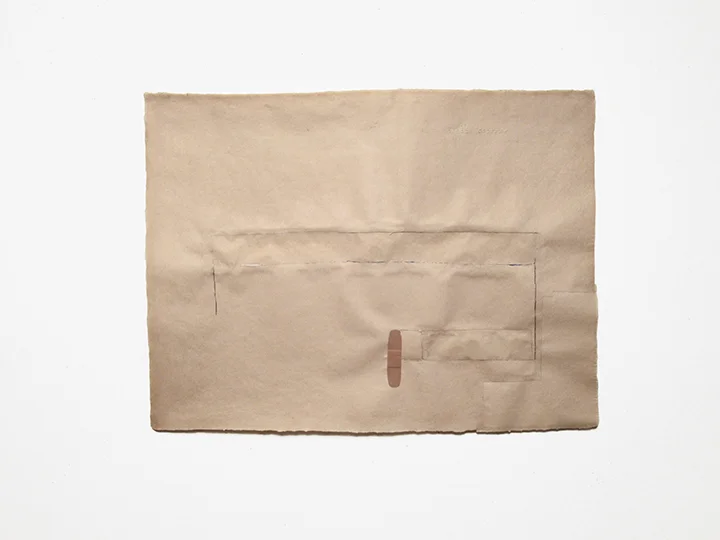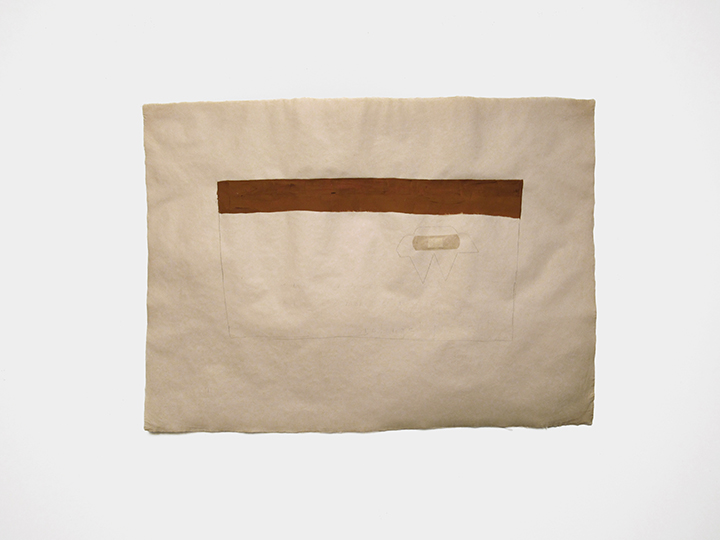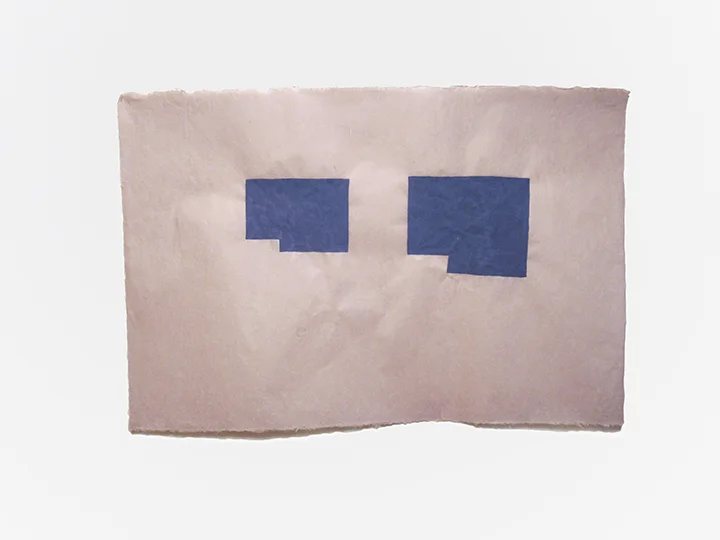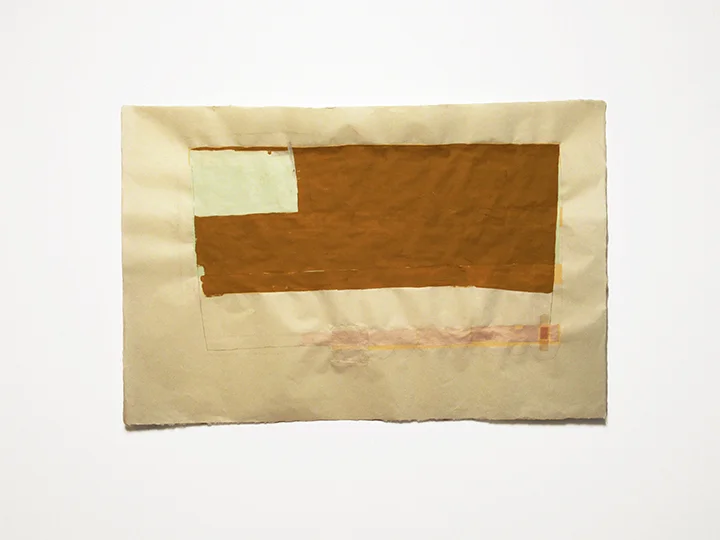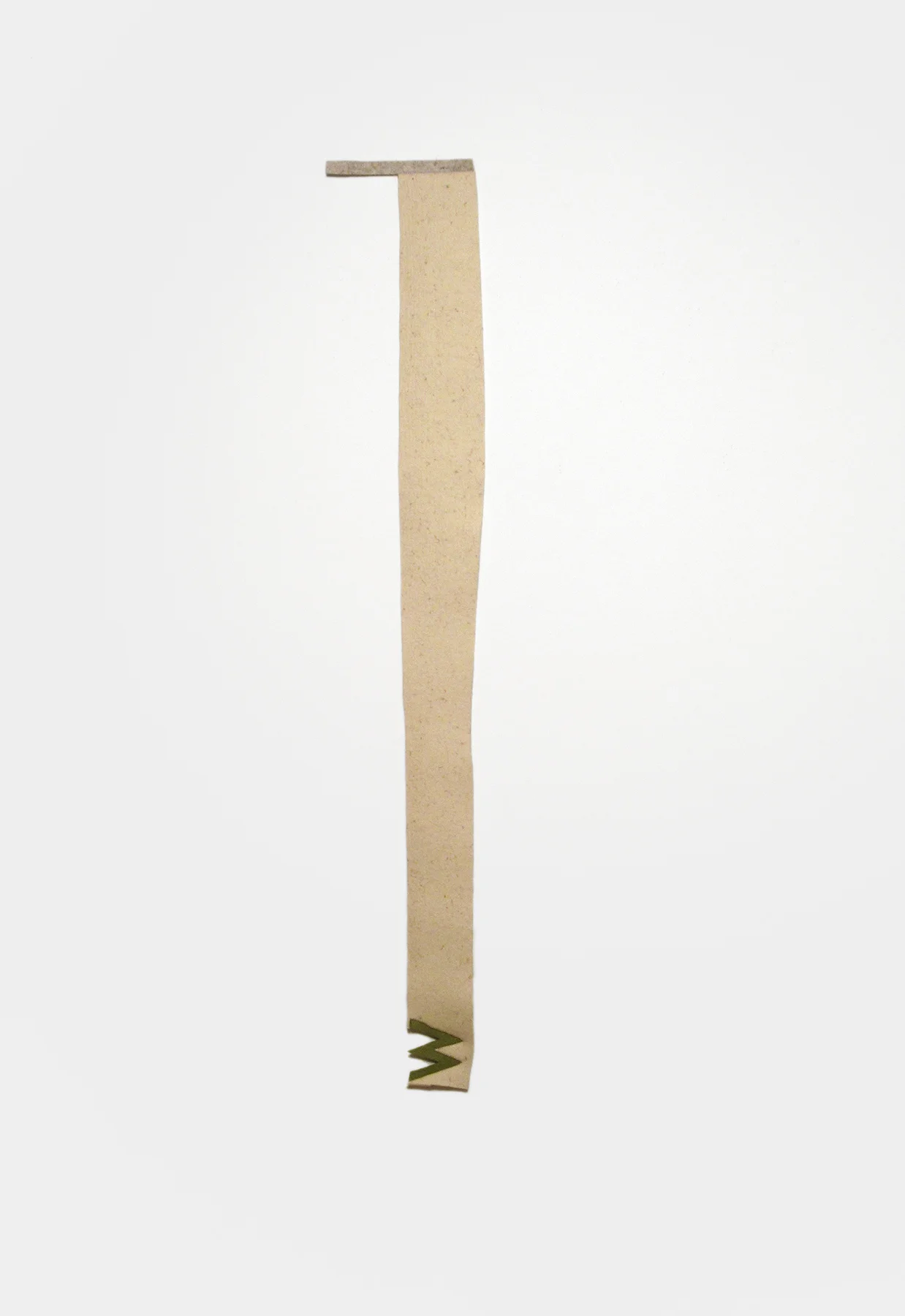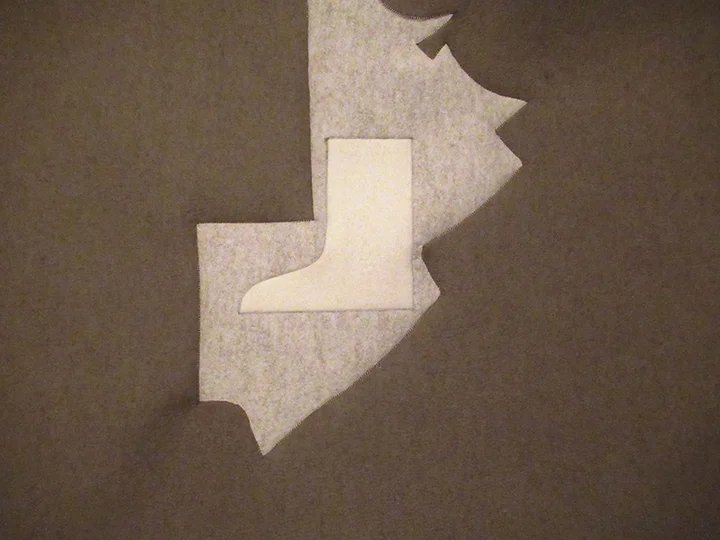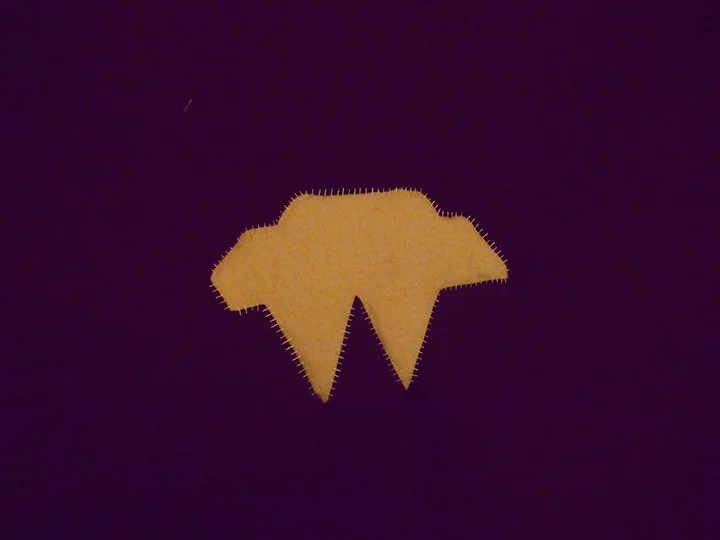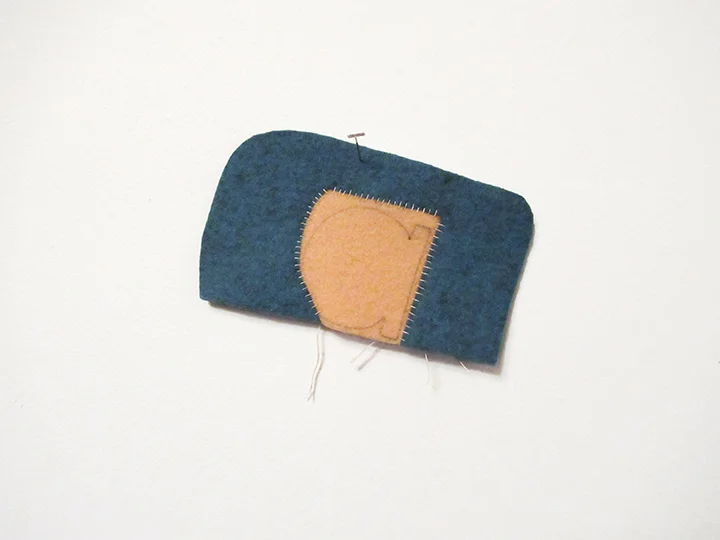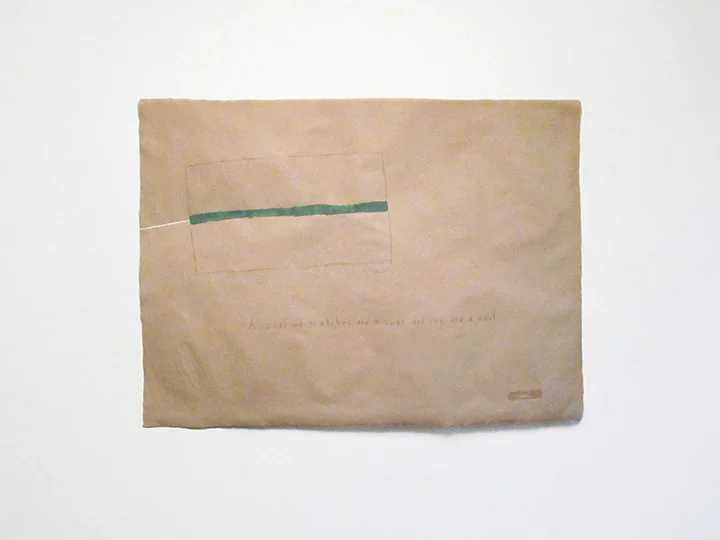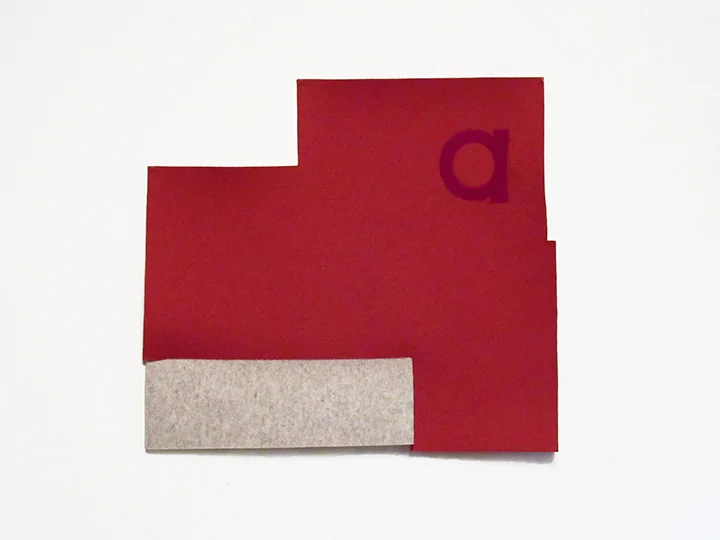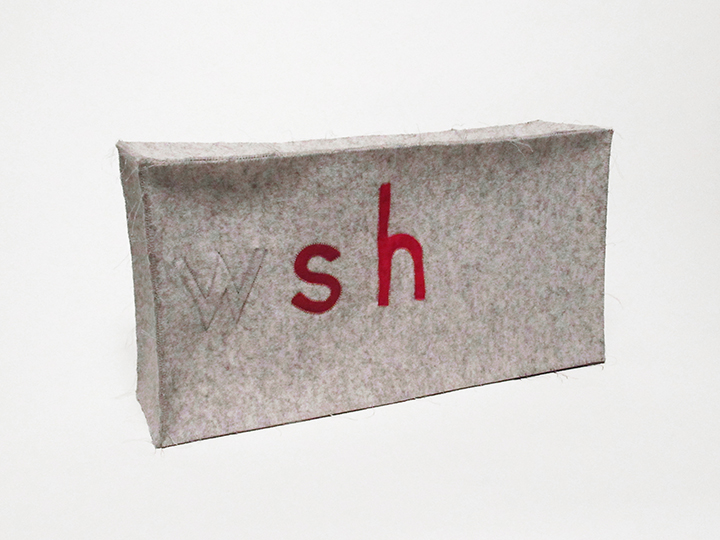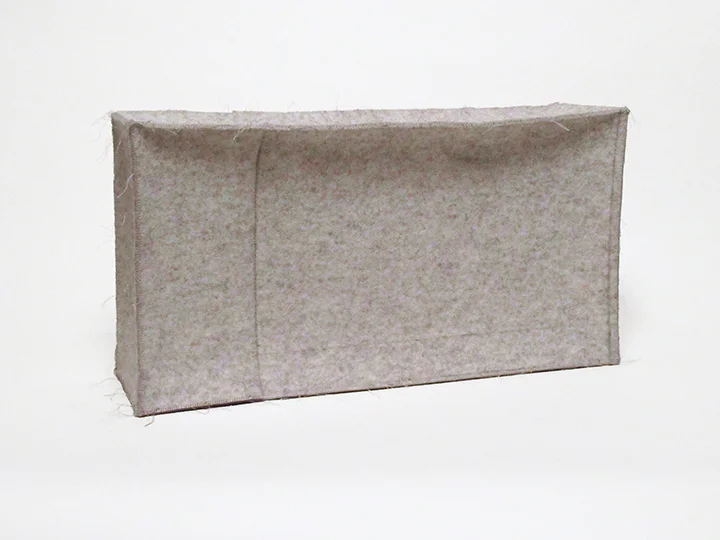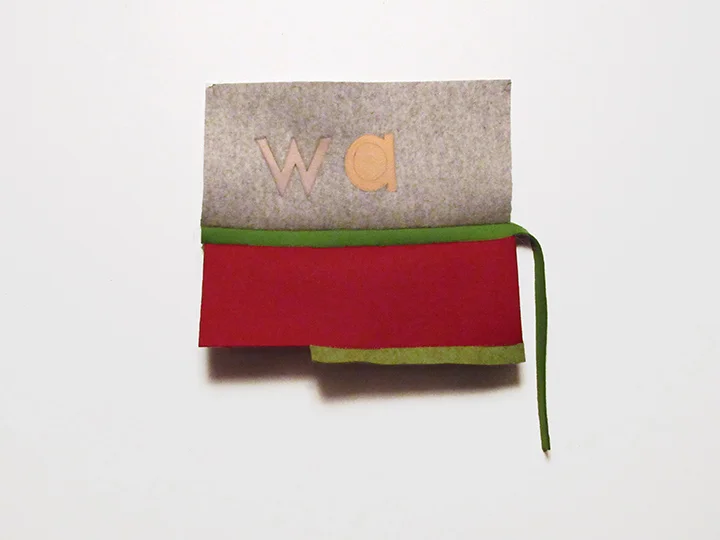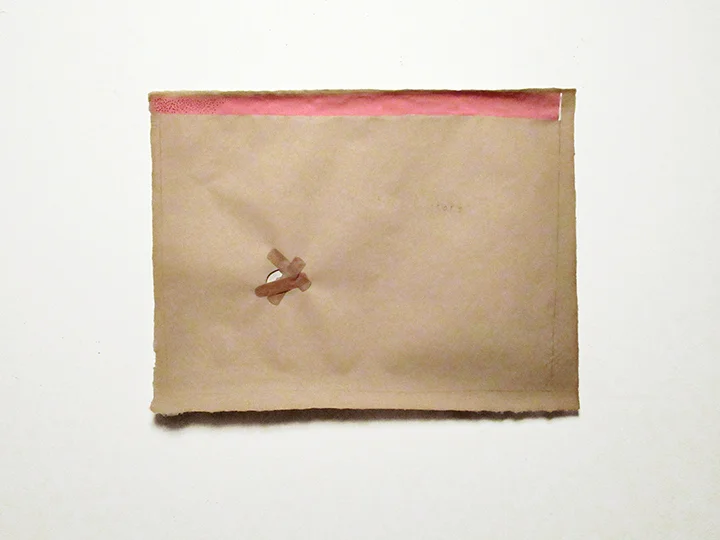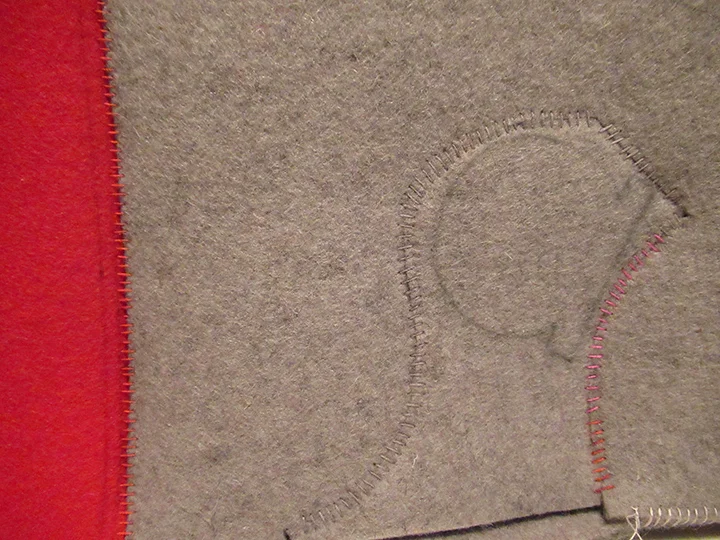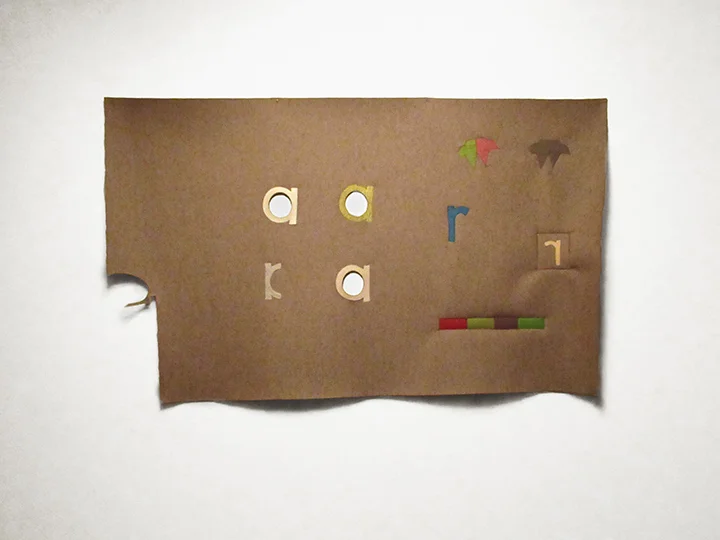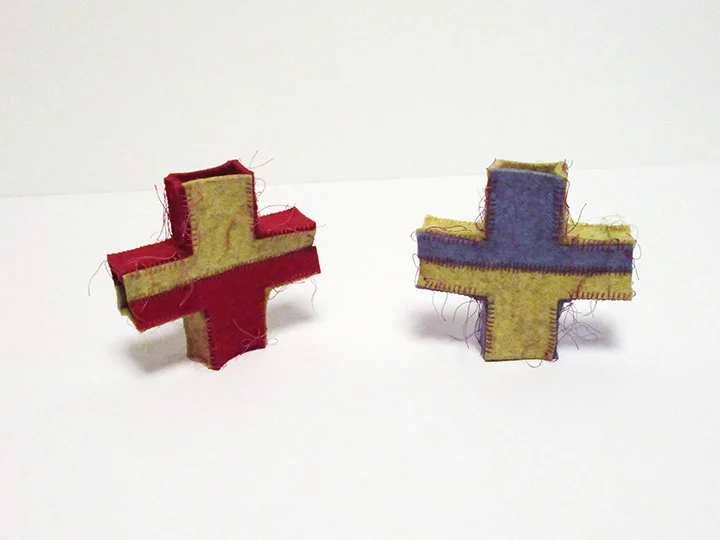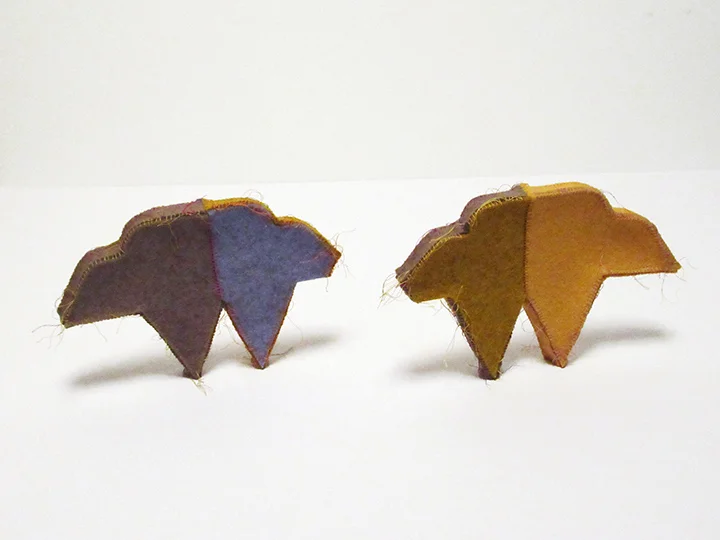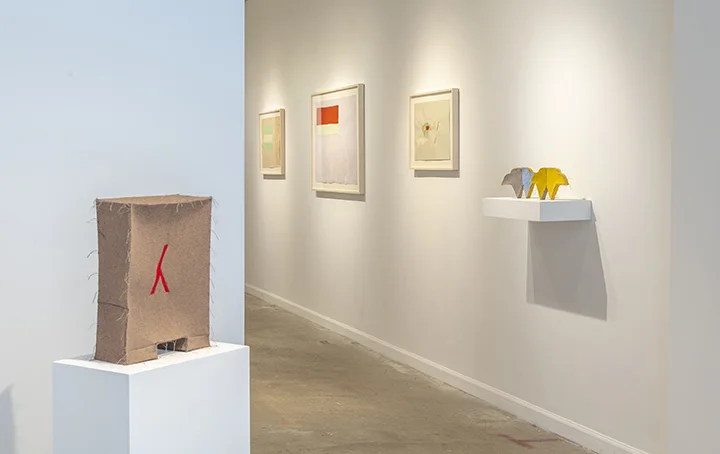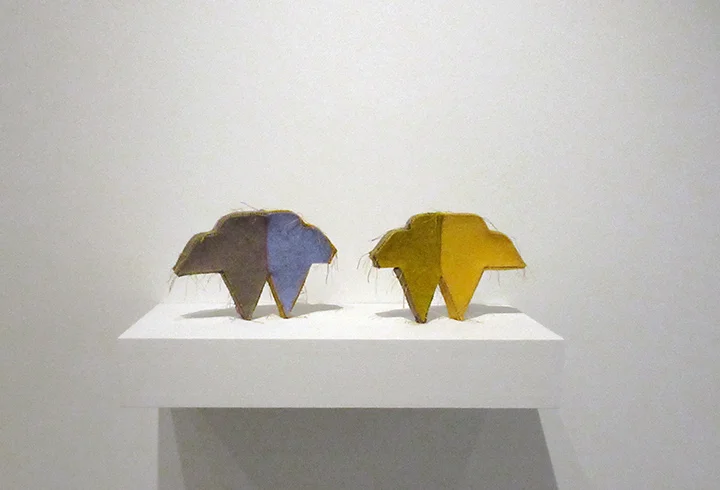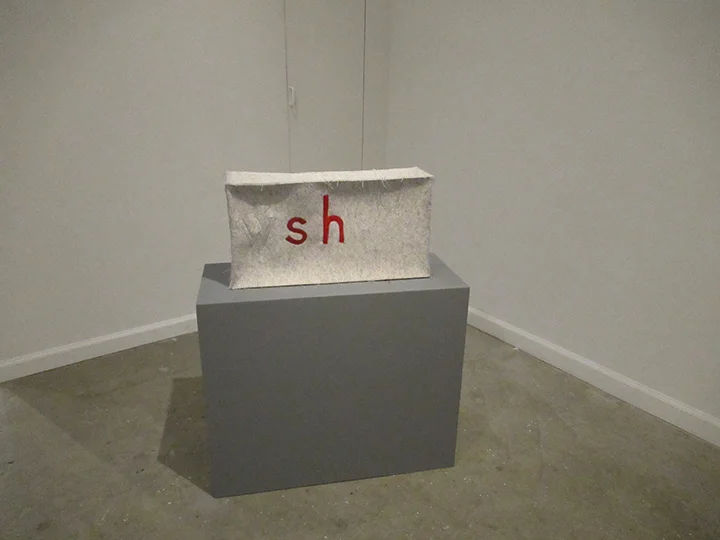See Why | 2015-2019
My use of letterforms is perhaps not so much a ‘why/because’ thing as it is something I am strongly drawn to do.
(I am, though, often amused to ask myself, why the ‘y’— and upside down yet?)
I dare myself to trust the impulse and explore it through making the work.
See where it leads.
My involvement with icons and symbols (of my own devising) has run consistently through all my work.
Letters of the alphabet have iconic power.
Just like the boot and polar bear pictogram-like shapes I have used, not to mention the wooden ice cream spoons, peanuts, band-aids, soap, walnuts, and other things.
They are what they are but not only…
It’s all language to me.
Which brings me to feel a closeness with Marcel Broodthaers, for example.
And writers like Gertrude Stein, but also Francis Ponge— and A.A. Milne (Winnie the Pooh).
Something about both embracing and destroying language in order to locate underlying truths in so doing.
(Magritte’s ‘This is not a pipe…’)
Like Eva Hesse, I appreciate the absurd.
I think also about the relationship between the words text and textile.
My late friend Tina, a textile conservator, wrote a book about tapestries as text…
Felt, though, is a non-woven textile.
I only use wool felt; it is creature substance as is the silk thread with which I stitch it.
I think of the felt as compressed chaos.
This is not the fabric of rationality.
Cézanne has been a primary influence.
As I understand his process, he built a whole incrementally, responding to points in space, one at a time—with accuracy.
The resulting image, not always conventionally “complete,” was also slightly askew.
I found these sometimes very subtle discontinuities enlivening and they matched my own sense of things.
I suppose it is not irrelevant to mention that I only use my left hand to write and draw.
Everything else I do right-y— including stitching.
I see little difference between forming letters or other shapes.
Both the felt pieces and works on paper continue established improvisational processes.
Band-aids as collage elements have returned.
They first appeared in the Very well saint series, exhibited at The Drawing Center in 2000.
There is resonance between the band-aids, the cuts and cutouts, as well as the stitching and use of felt fragments, cast-offs, rejects, and remnants.
Many of the paper pieces are titled or contain words or outtakes from Gertrude Stein's writings, a practice that also began with the Very well saint series.
The words are playful and absurd, defying singular interpretations
In childhood I played with yellow cardboard punch-out letters.
As a very young child, I drew with scissors, imagining hidden creatures released from their construction paper ground.
As an adult I bring these ‘creatures’ (be they letters or other shapes) back into the ‘corral’ and stitch them into position/relationship.
It is generally not an easy fit, despite the accuracy of the cut spaces.
The tension of the stitches in combination with the irregularity of the material subtly distorts and creates topographical fluctuations, which cannot be predicted.
But also seem lawful in hindsight.
Which never ceases to amaze me.
I understand this as metaphor.
There is no contradiction in the fact that my work is both playful and serious.
The letters are not so much to be read as to be appreciated for their 'beauty' and implied sounds— in a medium that is silencing.
Selections from this body of work comprised See Why, a solo exhibition at Lesley Heller Gallery in 2019. Selected works were included in both Rough and Ready, a group exhibition curated by Fran Shalom at Kathryn Markel Fine Arts and Present Participle, a solo exhibition at 57W57 Arts in 2021 –and in The World Develops Blank Spots, a four-person show at Margaret Thatcher Projects in 2022.
